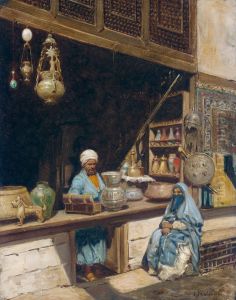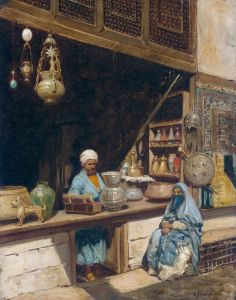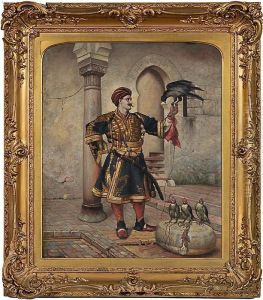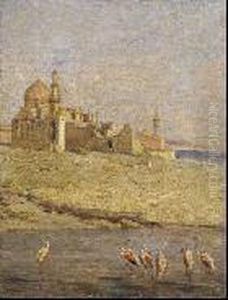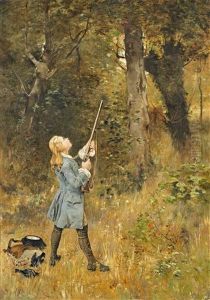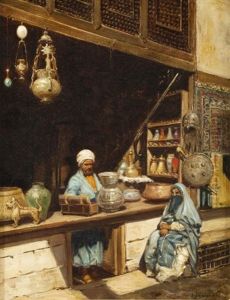Edoardo Calandra Paintings
Edoardo Calandra was an Italian writer and painter, born in 1852 in Turin, Piedmont, Italy, and passed away in 1911. His contributions to Italian literature and art during the late 19th and early 20th centuries were significant, reflecting the cultural and social transformations of Italy during that period. Calandra, though not as widely recognized internationally as some of his contemporaries, remains an important figure within the Italian cultural panorama for his multifaceted artistic endeavors.
Calandra's early life was marked by a profound interest in the arts, fostered by the vibrant cultural environment of Turin, which at the time was a hub for Italian intellectual and artistic movements. He pursued his passion for painting and writing with equal fervor, developing a unique style that intertwined his artistic and literary talents. As a painter, he was known for his landscapes and portraits, capturing the subtleties of light and shadow with a keen eye for detail. His artistic work, characterized by a delicate realism, reflected the influence of the Italian tradition as well as the emerging currents of Impressionism.
In literature, Calandra's works are distinguished by their deep psychological insight and exploration of character. He was an adept storyteller, weaving narratives that often delved into the complexities of human nature and the nuances of social interaction. His novels and short stories, while not as prolific as those of some of his peers, contributed significantly to the Italian literary scene, offering perspectives that combined a romantic sensibility with a critical eye towards societal norms and behaviors.
Throughout his career, Calandra engaged with the cultural circles of his time, contributing to the dialogue on art and literature in Italy. His legacy, though somewhat overshadowed by more prominent figures of Italian literature and art, remains integral to the understanding of the period's cultural output. Calandra's work continues to be studied by scholars interested in the intersection of visual and literary arts, offering insights into the complexities of Italian culture at the turn of the century.
